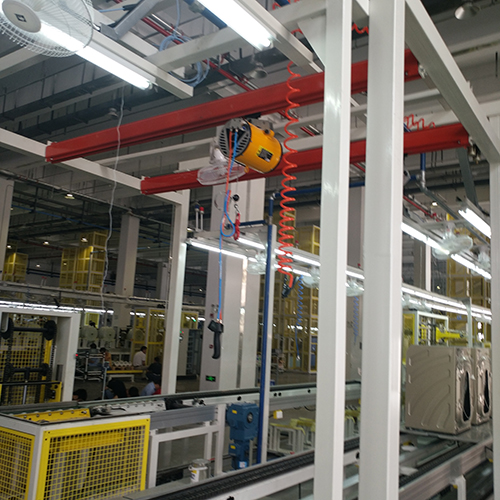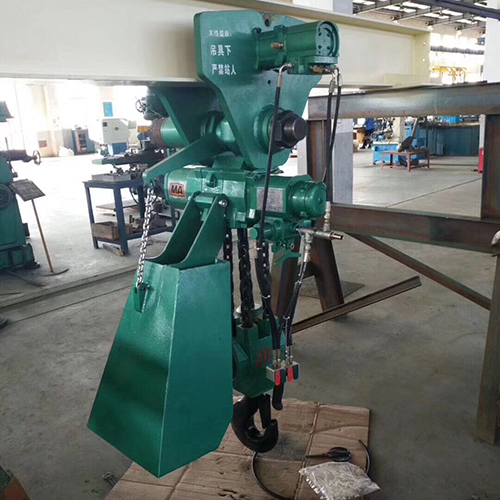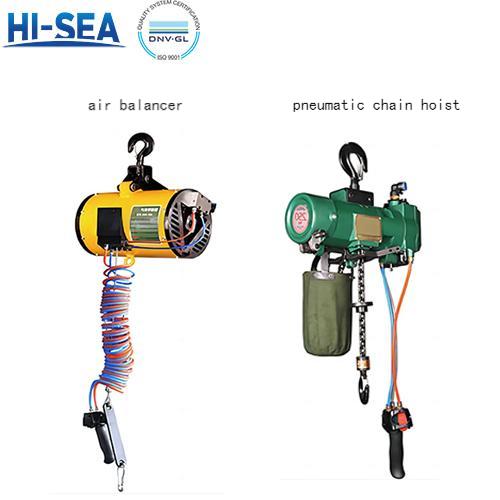
Air Balancer & Pneumatic Chain Hoist
Overview
Working Principle
Air balancers utilize the principles of gas dynamics to convert the pressure of compressed air into mechanical energy through the movement of the cylinder piston, which is then transformed into torque through the transmission mechanism, driving the lifting mechanism to operate, achieving a weightless state of the object. This allows the operator to easily move, assemble, and position heavy objects as required, reducing labor intensity and significantly improving work efficiency.
Pneumatic chain hoists use air as the driving force, converting the pressure of compressed air into rotary mechanical energy through the pneumatic motor, and outputting torque to drive the operation of the planetary reduction mechanism. The pneumatic control part achieves the forward and reverse rotation of the rotary mechanism, achieving lifting the object. It also has explosion-proof functionality because of its no requirement of electrical power drive, .
Function & Characteristic
Air balancer:
The transmission work is balanced and stable, with stable speed when the load changes.
When the position of the load changes in the suspended state, the balance valve can automatically adjust to achieve balance, allowing the load to stay at any spatial position within a certain range.
While the load is suspended, if the operator applies external force to the load, the load will move in the direction of the external force within a certain range.
Pneumatic Chain Hoists:
Pneumatic chain hoists can achieve stepless speed regulation, allowing for easy lifting and precise positioning of objects with minimal impact force. Additionally, they have a wide range of speed adjustment and high efficiency.
There are two operating modes for pneumatic chain hoists: fixed and running. The fixed mode involves being equipped with a hook and fixed in a certain location for operation, while the running mode involves being used with a running trolley, sliding on tracks for operation.
Applications
Air balancers, with their suspension characteristics, smooth transportation, ability to suspend at any position, and ability to move in the direction of external forces, are suitable for workplaces such as precise positioning on assembly lines and production lines. However, they have a relatively small load capacity (usually not exceeding 1 ton).
Pneumatic chain hoists operate at high speeds, have large load capacities (up to 100 tons), and also have explosion-proof functionality, making them suitable for large construction sites such as shipbuilding, chemical industries, and other industrial sectors.







